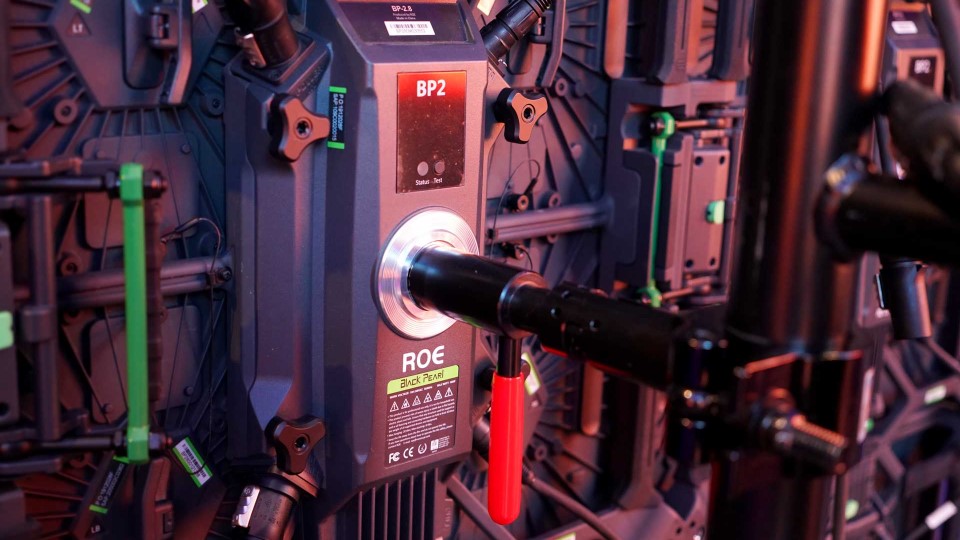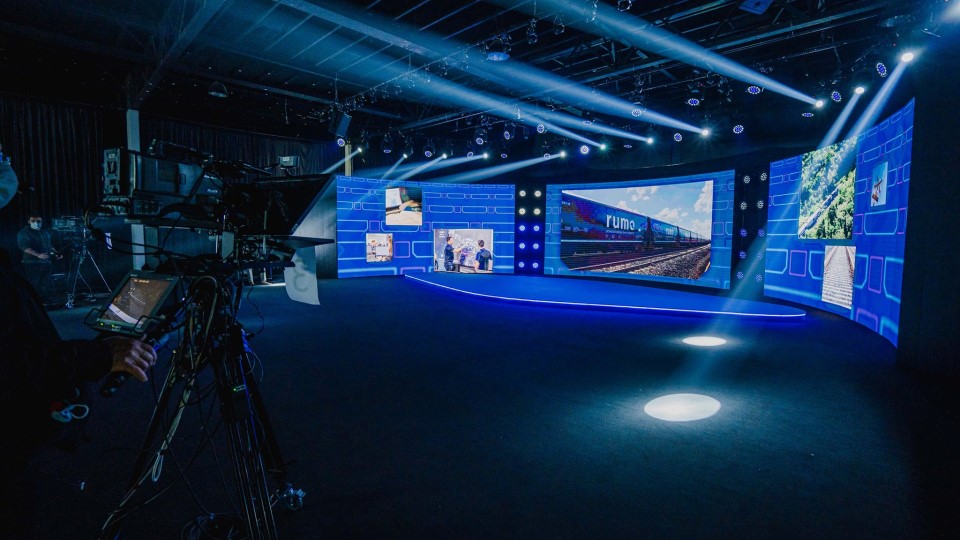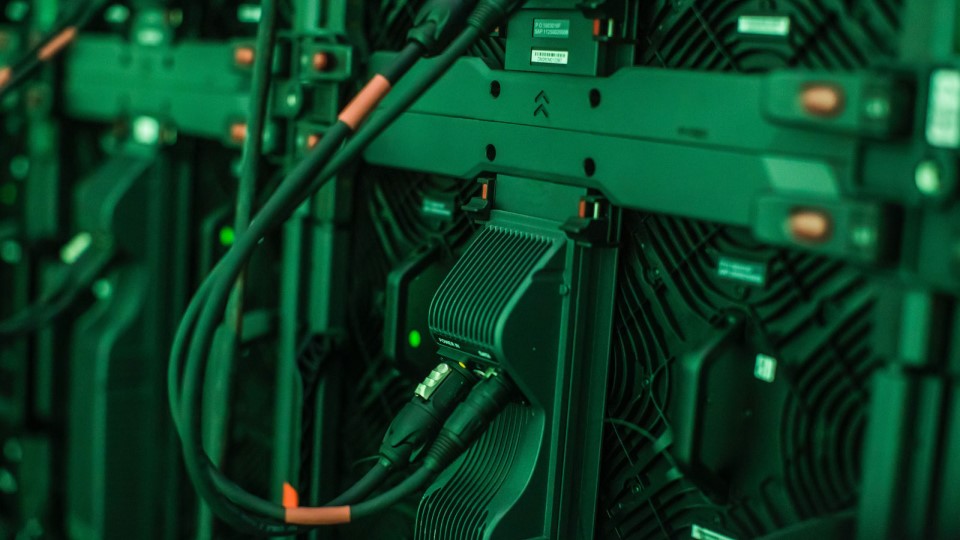Over the course of the past months we talked much about projection and projection mapping. However there is another, equally important visual event technology that we absolutely must mention, and that is LED screens. Naturally, LED has been around for a long time, and it has been a part of our lives in many areas, from TV screens and monitors to smart lighting and even Christmas tree decorations. While the technology itself (which we will talk briefly about below) is nothing new, innovation and the market’s changing needs have brought LED to stunning new heights.
In event production LED walls have been a favored option for outdoor video display, and its popularity is steadily on the rise for indoor use as well. In the recent years it has also revolutionized film making, especially so since the global pandemic, which also made LED display use in virtual event production skyrocket in the past year and a half. Easy, efficient, and bright, LED is a great choice for various settings, and in some cases the perfect alternative for video projection. There are, however, pros and cons to consider for both LED screens and projection, depending on what your event needs are, the space, the setting, and the purpose you want your video display to serve.
In this post we will talk all about LED video walls, when to choose them over projection, and how to best use them to make your conference, concert, trade show, or any other live, hybrid, or virtual event an experience that your attendees will never forget.
The versatile use of LED walls and displays by AV Alliance member VIDELIO Events
What is LED, really?
Quite simply put, LED (short for Light Emitting Diode) is a device that produces light when an electrical current passes through it. One of the main difference between LED and “regular” light bulbs is that these diodes are directional light sources, meaning that they emit light in specific directions and thus considerably improve lighting quality, whereas incandescent and fluorescent lights emit light in all directions.
LEDs have gained popularity through their versatility, long life-span, and energy efficiency over traditional lighting among other things, and are now widely used in different types of lighting across many industries. From medical devices to billboards and store displays, from aviation to automotive lighting, from photography to traffic signals, and from indoor and outdoor lighting to home decor, LED provides a great option for efficient energy conversion and electric consumption as opposed to traditional light bulbs. Not surprisingly, the electronics industry has been using LED in a large variety of products.

The back of a LED panel by ROE Visual
LED panels and walls
We are all familiar with what small(er) LED displays and LED screens look like, we see them all around us every day. What we would like to talk about more specifically instead are LED panels that make up gigantic walls at conferences, concerts, stadiums, sporting events, outdoor cinemas, airports, and a large number of other venues.
Curved LED walls
Due to its shape and its slight “surround” effect, curved LED provides a more pronounced feeling of depth than regularly built LED walls, especially from the audience’s point of view; by making use of our peripheral vision, curved LED walls are a perfect tool to create an immersive experience for viewers.
Certain types of LED panels – for instance most of those manufactured by our technology partner ROE Visual – can also be built as a convex (or even concave) curved wall. Some LED panels have built-in curving options, while others require special curving locks, depending on the exact curving angle of each panel type.

Curved LED wall in Maxi Audio‘s MAXI ARENA studio
The benefits of LED
Physics principles aside, LED technology is now frequently being used in live, hybrid, and virtual events as an alternative to projection or green screens. There are a number of advantages to each, of course, so let’s take a closer look at what are some of the characteristics that make LED work well for you!
Brightness and image clarity
In our article covering projection mapping techniques, we talked about the measurement of reflected light in lux. The measurement of direct light, which is the case for LED panels, is NIT. The equivalent of 1 NIT is 3.426 lux, which makes an LED display significantly brighter than a projected image. For an LED panel/wall to provide a high quality image (regardless of ambient light) is required to be 600 NITs or more.
Superior image clarity is another benefit of using LED panels, which is an absolute must for certain environments, for instance in virtual studios (more on that later). Whereas the light in projectors transmit the projected image to the surface (in this case, a screen), which in turn needs to travel to the audience’s eyes, LED emits its own light, which makes the image clearer, crisper, and brighter by the time it reaches our eyes.
When it comes to working in ambient light, LED screens are not restricted by it (unlike projection) as they emit light themselves, which makes their use perfect for outdoor conditions. Since they do not require dark conditions, both indoor and outdoor events held in bright environments can benefit from them, even in direct sunlight. Sounds like a dream, doesn’t it?
Ease of set-up and use
Due to their thin and comparatively light structure, LED panels are easy to transport and install, quick to power up before use, and can be dismantled and moved more easily within a venue than a standard projection screen. All of these factors make LED screens the ideal choice when setting up an event and having to consider venue restrictions.
LED panels are made by the manufacturer in batches, and can technically be assembled in any shape and size, depending mostly on your venue’s conditions, and on how many of these panels you actually require to achieve the desired result. This flexibility of LED wall construction means that you can unleash your creativity in the event design phase and not be limited too much by the venue itself. Using the same brand and type of LED panels for your wall is, however, crucial to ensure the accuracy and consistency of content and color display. This also eliminates the risk of different levels of LED degradation over time in your panels.
Long-term cost efficiency
It is no secret that LED panels do not come cheap (although they are much more affordable now than they used to be) and you will have to pay more upfront than you would for a projector, which can make it sound like a less attractive choice, however LED is much more cost-efficient when it comes to product lifespan. With the correct use and maintenance, LED video walls can last you between 50,000-200,000 hours!
Lower maintenance cost is another factor to consider: in the case of LED screens you do not have to set aside a considerable amount of money to regularly replace parts such as light bulbs or filters, as you would with projectors, nor deal with additional, hidden costs such as screens, blackout curtains, etc.
Installing ROE Visual’s Carbon (CB) series, or: how to quickly and easily build large LED walls?
When to choose LED for your event?
As mentioned before, whether you choose projection or an LED wall for your event should depend entirely on what you wish to achieve in terms of visual display, the size and characteristics of your venue, and last but not least, your budget.
Outdoor events
Unless you wish to deliver a stunning projection mapping job or a late night event, it is advised to opt for LED screens instead of projection. This is due to two crucial factors: ambient light and weather conditions. Like we said previously, daylight, and even direct sunlight, have no effect on the clear, crisp visibility of images displayed on a video wall, whereas they make projection practically impossible.
While a significant amount of planning and preparation must go into building an outdoor LED display, as weather conditions such as wind, sun, and rain can heavily influence the performance or the structural integrity of your screen, both manufacturers and event production companies are vastly experienced in eliminating any issues through e.g. safe weight distribution, meticulous rigging, and screen protection.
Indoor events
For most indoor events projection is a perfectly suitable and cost-effective solution. However there are instances when opting for an LED wall is a better solution. For events that focus heavily on visuals and the quality of the images displayed for the audience are the focal point of the event itself, we recommend the use of indoor LED panels that enables your viewers to enjoy clearer, crisper, and higher resolution visuals.
In order to provide the same from a short viewing distance, however, it is important to opt for LED panels with a smaller pixel pitch (the distance from the center of one pixel to the center of the adjoining pixel, measured in millimetres) to achieve a sharp image even from close-up. This, on the other hand, carries additional costs, which you need to factor into your budget.
Size also matters. Not all venues are suitable for projection, simply because the space does not allow for a big enough distance to place the projector at the required distance from the screen or surface, and rear projection is not an option, either. In these cases LED walls are the perfect solution to save space and provide your audience with superior image quality.
Pushing the boundaries of what it is possible: 3D LED stage production by Dorier Group
LED screens in virtual production
Virtual and hybrid event production has been skyrocketing in the past year, and while green screens are still hugely popular in virtual production, the use of LED sreens has been steadily on the rise, especially with the boom in technologies such as xR. Now it is possible to create immersive and dynamic sets and backgrounds, based on simple LED panels instead of elaborate and expensive set designs.
LED panels are the perfect tool to display any content, as well as set backdrops created in virtual reality. A traditional green screen background does not allow the presenters or the audience to see (let alone interact with) the digital content in real time, whereas LED panels provide this feature, not only allowing production teams to create content up until the last minute, but also the participants on the immersive set to see everything around them in real time.
This technology is groundbreaking not just in virtual film production (think Disney’s The Mandalorian, where over half of the series was shot on a virtual set), but also in broadcasting, and is thus revolutionizing how hybrid and virtual events are produced around the world.
To learn more about the technical aspects of LED technology, the necessary equipment, and the related costs, we invite you to get in touch with us and find out what our AV Alliance members can do for you and your event!

